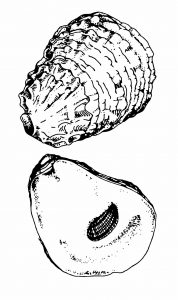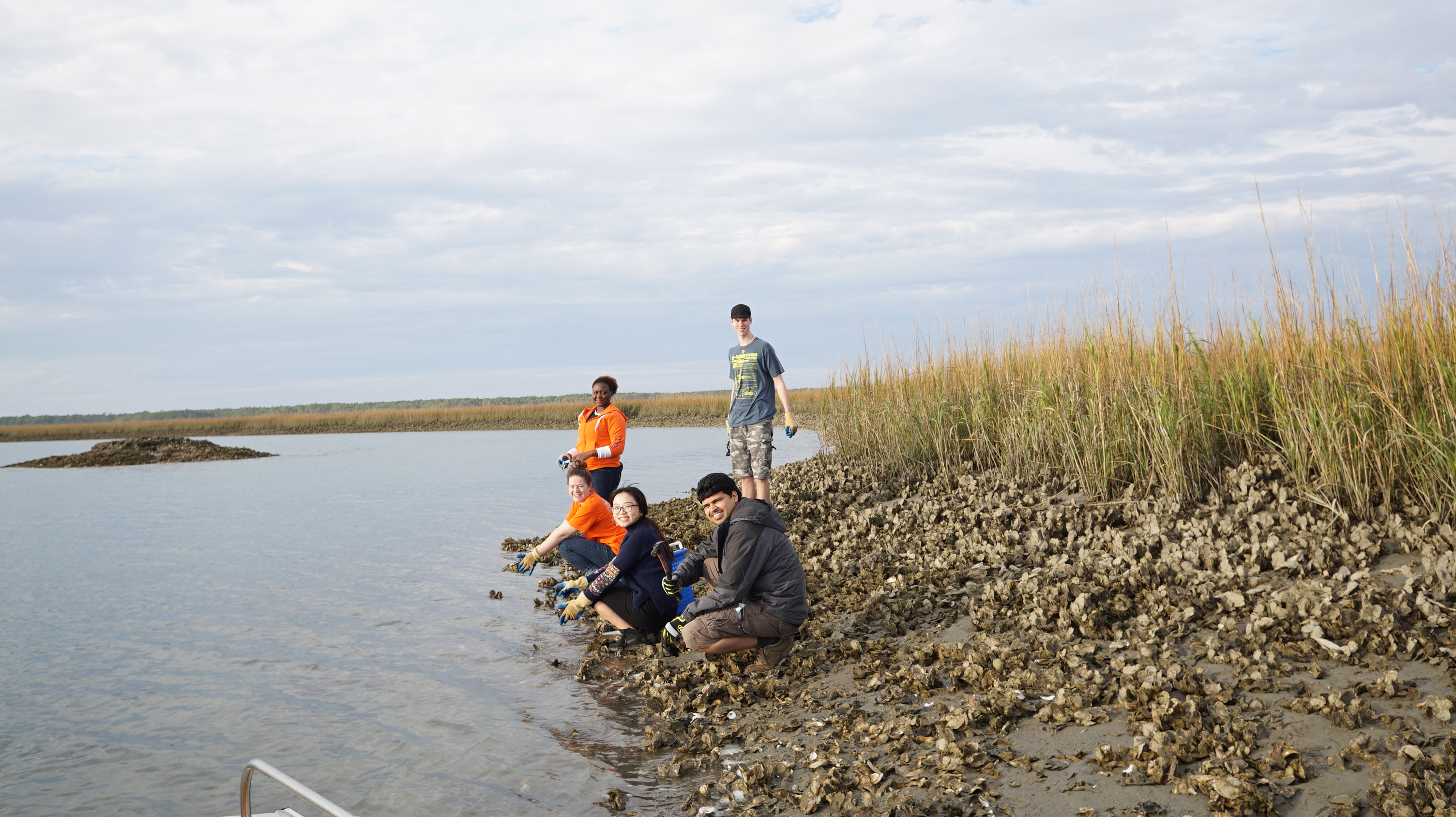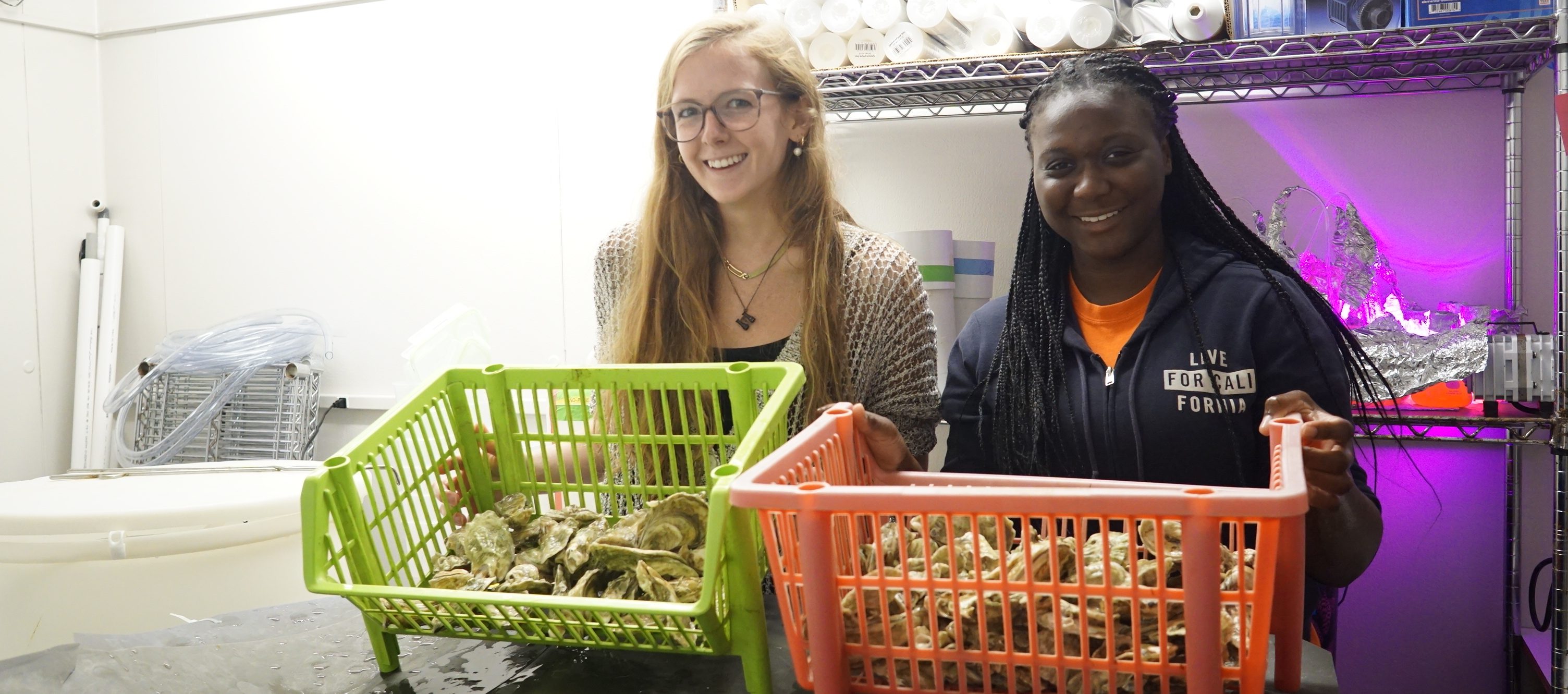by Niko Hajimihalis
 Oysters are famous for their unique taste, but Clemson University’s Ocean Under the Magnifying Glass—Using Microscopy to Understand the Impacts of Climate Change Creative Inquiry project is here to show that these small creatures have much more to offer. Oysters are a key component in the coastal ecosystem: they serve as natural buffers to protect beaches from rising sea levels; act as natural filters in the ocean;
Oysters are famous for their unique taste, but Clemson University’s Ocean Under the Magnifying Glass—Using Microscopy to Understand the Impacts of Climate Change Creative Inquiry project is here to show that these small creatures have much more to offer. Oysters are a key component in the coastal ecosystem: they serve as natural buffers to protect beaches from rising sea levels; act as natural filters in the ocean;
and they provide a home for other underwater creatures. Unfortunately, climate change may be affecting the shell formation of these creatures in ways that marine biologists never expected.
The project, led by Dr. Vera Chan and Dr. Andrew Mount in the Department of Biological Sciences, approaches the study of oyster shell formation through microscopy. By examining the formation of oyster shells through a microscope, students are able to investigate how climate change potentially affects the development of oysters. The team cultivates wild Atlantic oysters, Crassostrea virginica, in an artificial, recirculating seawater system. “We have created a mini ocean and hatchery in Clemson,” Chan said. By replicating the ocean’s ecosystem , the team is able to monitor spawning in the oysters and track abnormalities in shell formation caused by higher carbon dioxide (CO2) levels in the water.
, the team is able to monitor spawning in the oysters and track abnormalities in shell formation caused by higher carbon dioxide (CO2) levels in the water.
By increasing CO2 levels in the system, the team is replicating potential levels of CO2 in the ocean caused by global warming. The team closely monitors how increasing CO2 levels impact the oyster population by noting changes in the oyster shells’ growth, development and calcification. Jonathan Stewart, a senior biological sciences major, thinks the team’s research may impact other areas of research. “You may find other applications from researching how the shell develops that are unrelated to this project. Whether that be industrial applications or using microscopy in other fields, it could benefit research in different fields,” Stewart said.
Time will tell how climate change affects oysters on a microscopic level. By creating and studying oysters in an artificial, miniature ocean in Clemson, this team is helping to discover the impacts of rising CO2 levels on oysters. Similar to how oyster lovers crack open their favorite seafood, this Creative Inquiry team is cracking open the study of oyster shell formation.




